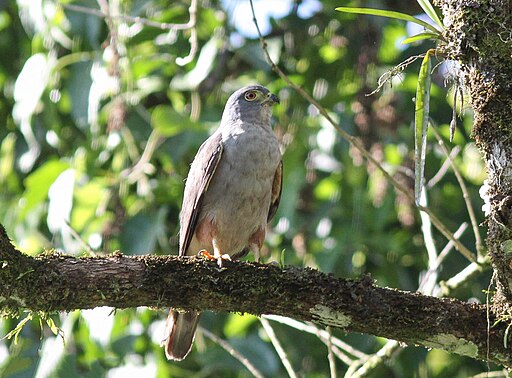 |
| Rufous-thighed Kite Harpagus diodon. By Rick elis.simpson (Own work) [CC-BY-SA-3.0 (http://creativecommons.org/licenses/by-sa/3.0)], via Wikimedia Commons |
These findings are not merely of academic importance. Given that Rufous-thighed Kite is now thought to be an Atlantic Forest breeding endemic and that only 11·7% of this biome remains (Ribeiro et al. 2009), the species could be in serious trouble. Populations at the end of 19th century are likely to have been at least ten times higher than at present (Lees & Martin 2014) and its current rarity may simply be explained as the result of catastrophic loss of habitat.
References
Bierregaard, R.O., Jr, Bonan, A., Marks, J.S. & Sharpe, C.J. (2014) Rufous-thighed Kite (Harpagus diodon). In: del Hoyo, J., Elliott, A., Sargatal, J., Christie, D.A. & de Juana, E. (eds.) (2014). Handbook of the Birds of the World Alive. Lynx Edicions, Barcelona. (retrieved from http://www.hbw.com/node/52974 on 30 September 2014).
BirdLife International (2014) Species factsheet: Harpagus diodon. Downloaded from http://www.birdlife.org/datazone/species/factsheet/22695063 on 30/09/2014.
Lees, A.C. & Martin, R.W. (2014) Exposing hidden endemism in a Neotropical forest raptor using citizen science. Ibis doi: 10.1111/ibi.12207. PDF
Ribeiro, M.C., Metzger, J.P., Martensen, A.C., Ponzoni, F.J. & Hirota, M.M. (2009) The Brazilian Atlantic Forest: how much is left, and how is the remaining forest distributed? Implications for conservation. Biological Conservation 142(6): 1141-1153. PDF
No comments:
Post a Comment